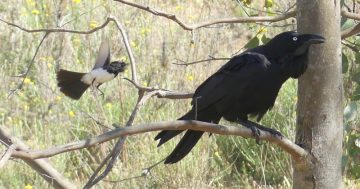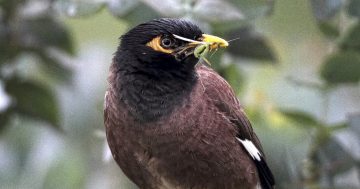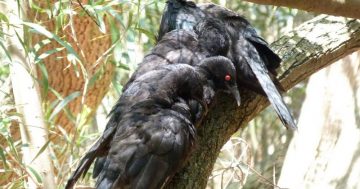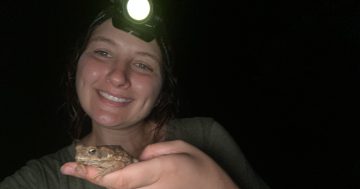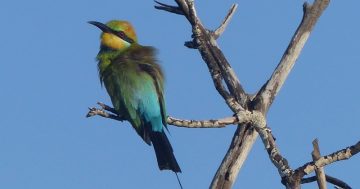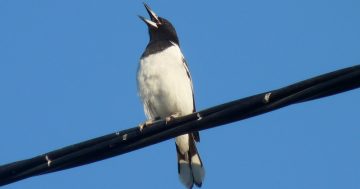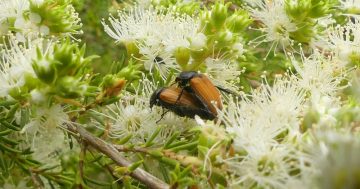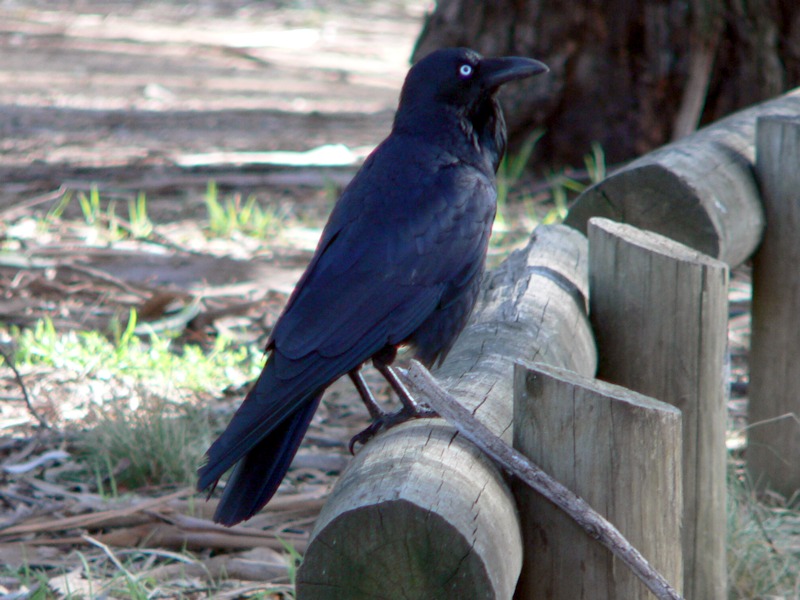
Ravens readily adapt to suburban living and hang around garbage tips and picnic areas. Photo: Ian Fraser.
Along with many other Canberrans, I loved the recent story about the nesting Gungahlin ravens taking exception, followed closely by direct action, against commercial drones daring to approach their nest.
Any nesting bird will react to a predator in their territory, and the only safe assumption about an unfamiliar large flying object is that it’s a threat to the brooding parent, chicks or eggs. Small birds will stay low and quiet; larger, bolder ones will meet the threat head-on.
My favourite part about this story is the report that although on the first attack the raven lost some feathers and presumably suffered some painful blows from the propellors, by the second day, it had worked out how to avoid them and attack other parts of the drone. We learn from all this that ravens are big, not afraid to protect themselves, and very smart indeed.
Ravens and crows (we’ll get to that soon) have had bad press for centuries. My own suspicion is that it stems from their associations with ancient battlefields, but needless to say, they neither started nor fought the wars, they just helped clean up afterwards.

Willie Wagtails are well aware of a raven’s fondness for eggs and will see them off. Photo: Ian Fraser.
In Australia, ravens have long been demonised as ‘lamb killers’. However, the myth was thoroughly debunked by years of intensive study by near-legendary CSIRO scientist Ian Rowley in the area around Lake George 50 years ago.
Ravens certainly attend when ewes are lambing, but are not interested in healthy lambs, which can readily see them off. They eat stillborns and hasten the end of some weak and dying lambs but make no difference to overall losses.
Raven or crow? Well, we’ve opted, for no good reason, to call three of the near-identical Australian species’ ravens’ and the other two ‘crows’, but it’s a pretty meaningless distinction, like kangaroo/wallaby and frog/toad. Locally we have two ravens – Australian and Little, but if you’re used to calling them crows, I see no reason for you to change.
Mostly in Canberra, we see Australian Ravens, which are larger, with distinct throat hackles and a falsetto wailing call. They are generally in pairs and stay close to their breeding territory all year round.
Little Ravens are slightly smaller (though you need to see them side by side to recognise that), with a deeper, shorter call, and are usually seen in wandering flocks. In summer, they go up into the mountains to prey on Bogong Moths, though in a good cicada season, they’ll come down to take advantage of them too.
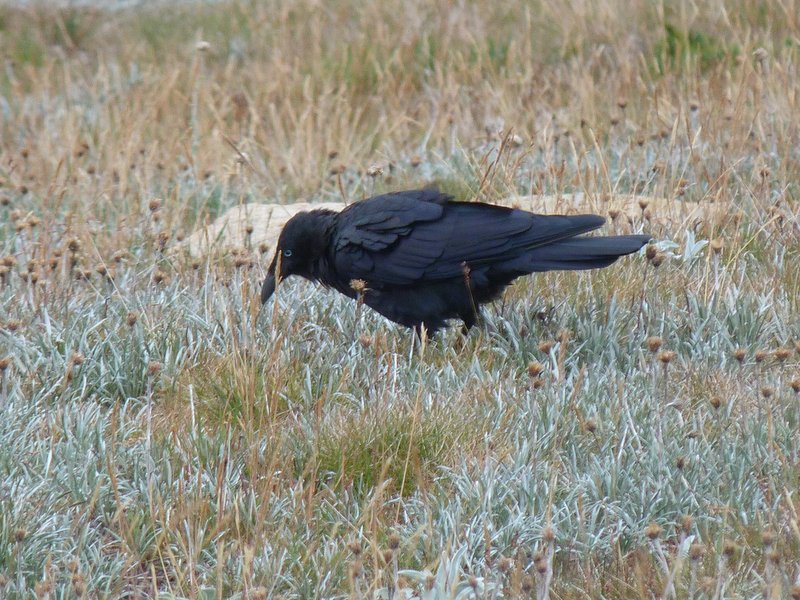
Little Ravens are common in high mountain meadows in summer. Photo: Ian Fraser.
One reason for the success of Australian Ravens is their very broad diet. They will eat insects, grain, roadkill, reptiles, mice, young rabbits and fruit, and scavenge our garbage. A friend sent me a photo of a raven catching fish on a dam spillway in inland Australia.
They are especially fond of eggs. When I kept ducks, I couldn’t work out why they’d stopped laying until I saw a raven on a panicked duck’s back, pecking at the tail where it had learnt that eggs appeared! I put netting over the run. Ravens are notorious for stealing golf balls, presumably mistaking them for eggs.
They will stash food for later use, pushing it into hollows or burying it in soft ground. More importantly, they remember where they put it, which is more than I can do sometimes. As I’ve already noted, they are highly intelligent.
Elsewhere in the world, closely related crows are famed for their remarkable tool-using abilities – but even more remarkable is their capacity to construct these tools for particular tasks.
New Caledonian Crows will carry a little tool kit around with them, with hooks and probes and scrapers for extracting grubs from hollows. They choose and snip twigs and palm leaves to suit and use moulted feathers as probes.
In captivity, they quickly learnt to use and shape wire provided to them. Japanese Crows have been filmed putting walnuts on the road when the traffic lights are red and collecting the kernels when the lights have changed and the cars have cracked the shells. Other crows pull up set fishing lines to take fish or bait.
I’m not aware of such behaviour being reported in Australia, but I’d be not all surprised if it were. These really are amazing birds and we don’t appreciate them enough. Drones beware.
Ian Fraser is a Canberra naturalist, conservationist and author. He has written on all aspects of natural history, advised the ACT government on biodiversity and published multiple guides to the region’s flora and fauna.












